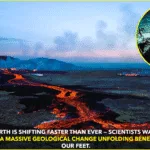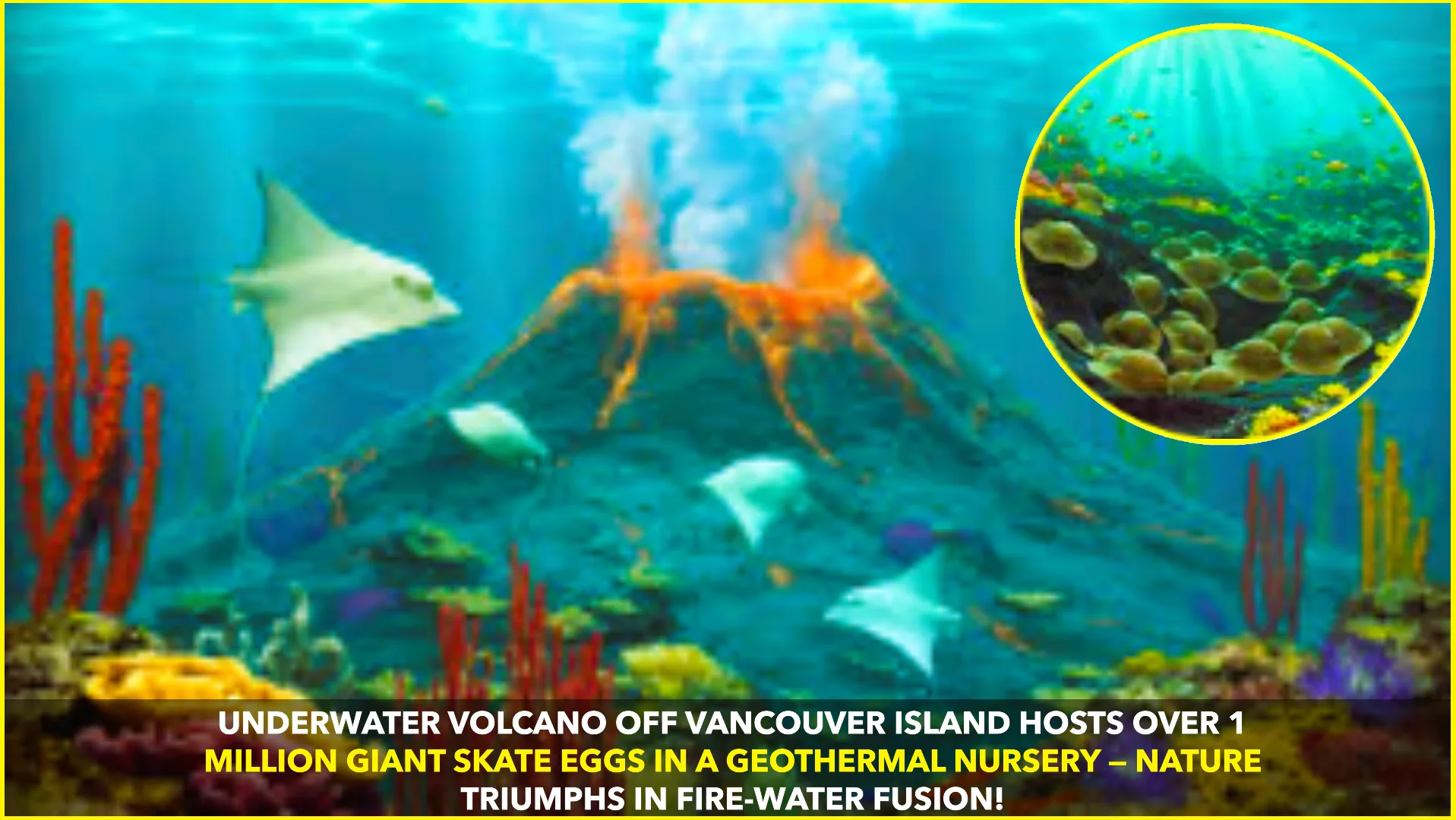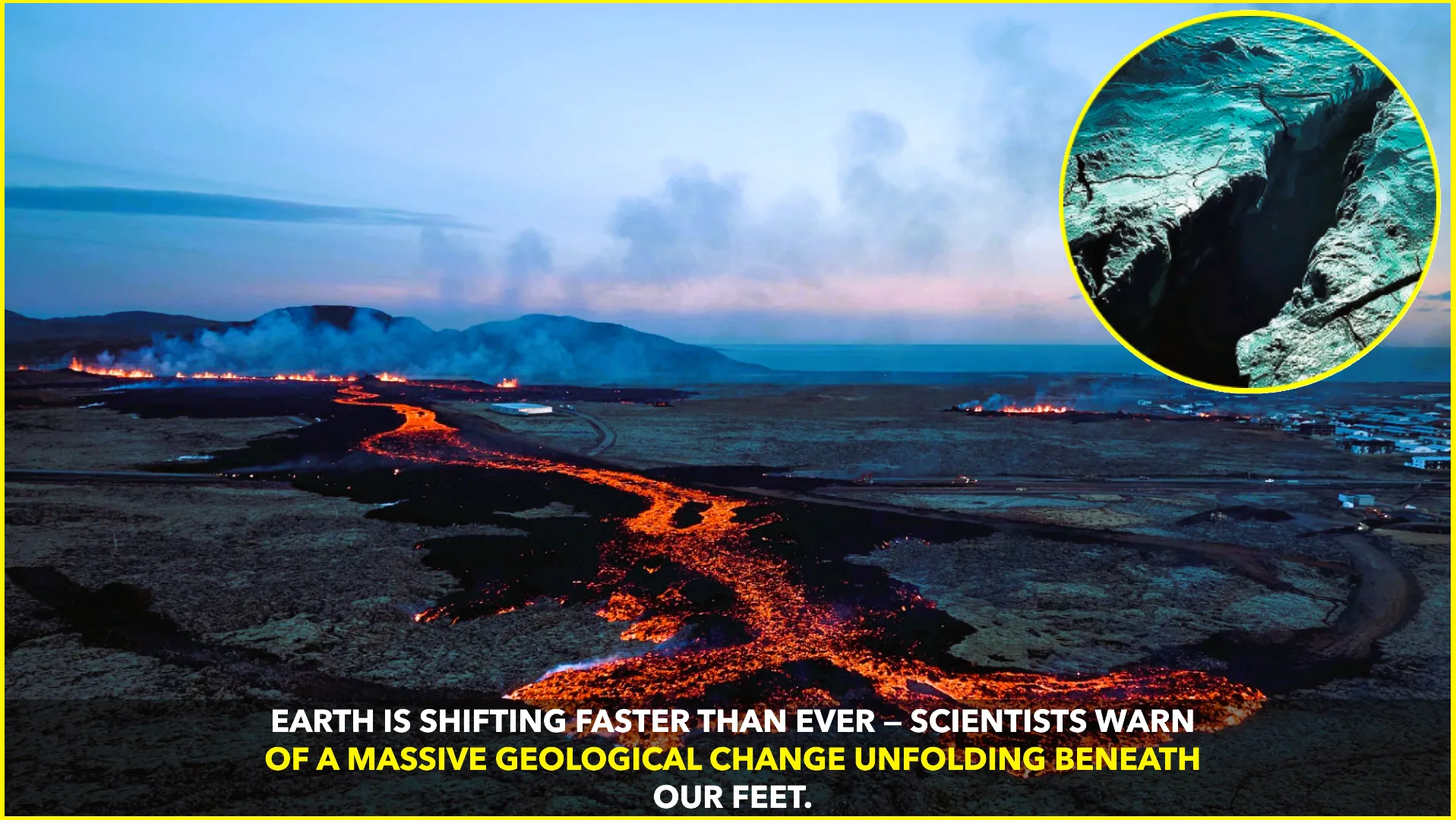A Hidden Nursery Beneath the Waves
In a stunning turn of events, scientists exploring the deep sea off Vancouver Island have discovered an extraordinary underwater nursery tucked inside what was believed to be a dormant volcano. What they once thought extinct is now a thriving cradle for marine life, with researchers estimating more than one million giant eggs scattered across its summit Sustainability TimesLive Scienceimpactful.ninja.
Volcano Awakens with Warmth and Life
The underwater mountain—rising roughly 3,600 feet (about 1,100 m) from the ocean floor and located nearly a mile below the surface—was first explored in 2019. Scientific instruments revealed geothermal vents emitting mineral-rich warm water, upending assumptions that the seamount was dormant and lifeless.
This volcanic warmth creates a soft, incubator-like environment. It’s ideal for young skate development, especially since these eggs normally require up to four years to hatch unless given a thermal boost Earth.comLive ScienceWikipedia.
Meet the Pacific White Skate
These massive egg cases belong to the elusive Pacific white skate (Bathyraja spinosissima), one of the deepest dwelling species of skate. Adults can reach nearly 6.5 feet (2 m) in length and inhabit depths between approximately 2,600 and 9,500 feet (800–2,900 m).
Each egg case—often called a “mermaid’s purse”—is roughly 18–20 inches (46–50 cm) across. They are nutrient-rich and tailored for survival in the harsh ocean depths Earth.comParis 2018Wikipedia.
A Reproductive Marvel at Scale
While deep-sea egg cases have been found in past surveys, rarely have scientists witnessed them in situ in such volume. Here, researchers believe they’ve uncovered between hundreds of thousands to over a million live egg cases, the largest skate nursery ever recorded.
Notably, a 2023 expedition included live footage of a female skate laying eggs at this location, suggesting repeat visits and deliberate site selection Earth.comLive ScienceSSBCrack News.
Why Volcanoes Matter to Marine Life
The warm geothermal flow at this seamount speeds up embryonic development, shortening what would otherwise be a four-year incubation. This heat-rich habitat gives skate embryos a much higher chance of survival before venturing into the even colder depths.
This kind of volcanic‐driven natural incubator isn’t unique. Similar behaviors were observed near hydrothermal vents in the Galápagos Islands in 2018, though on a much smaller scale Earth.comWikipedia.
Implications for Conservation and Research
This discovery underscores how geological activity shapes marine ecosystems. Active volcanoes that discharge warm, mineral-rich water may serve as critical biological nurseries for not only skates but perhaps other deep-sea species.
The site itself currently lacks legal protection, making it vulnerable to deep-sea mining, trawling, or other disturbances. Scientists and conservationists are calling for measures to safeguard these fragile but vital habitats before they’re altered or destroyed.
Ongoing research aims to use time-lapse imaging, genetic sampling, and repeat submersible surveys to monitor visitor species, egg development, and seasonal patterns. Understanding why the skates return—and whether other species share the site—may reshape our view of adaptation and survival in the deep ocean Earth.comSustainability Timesimpactful.ninja.
🔥 A cradle of life… born from fire and water
This underwater volcano’s transformation into a bustling nursery illustrates nature’s ingenuity. In a realm we once thought barren, warmth and geology have sparked a hidden ecosystem—proof that even in darkness, life finds a way.










